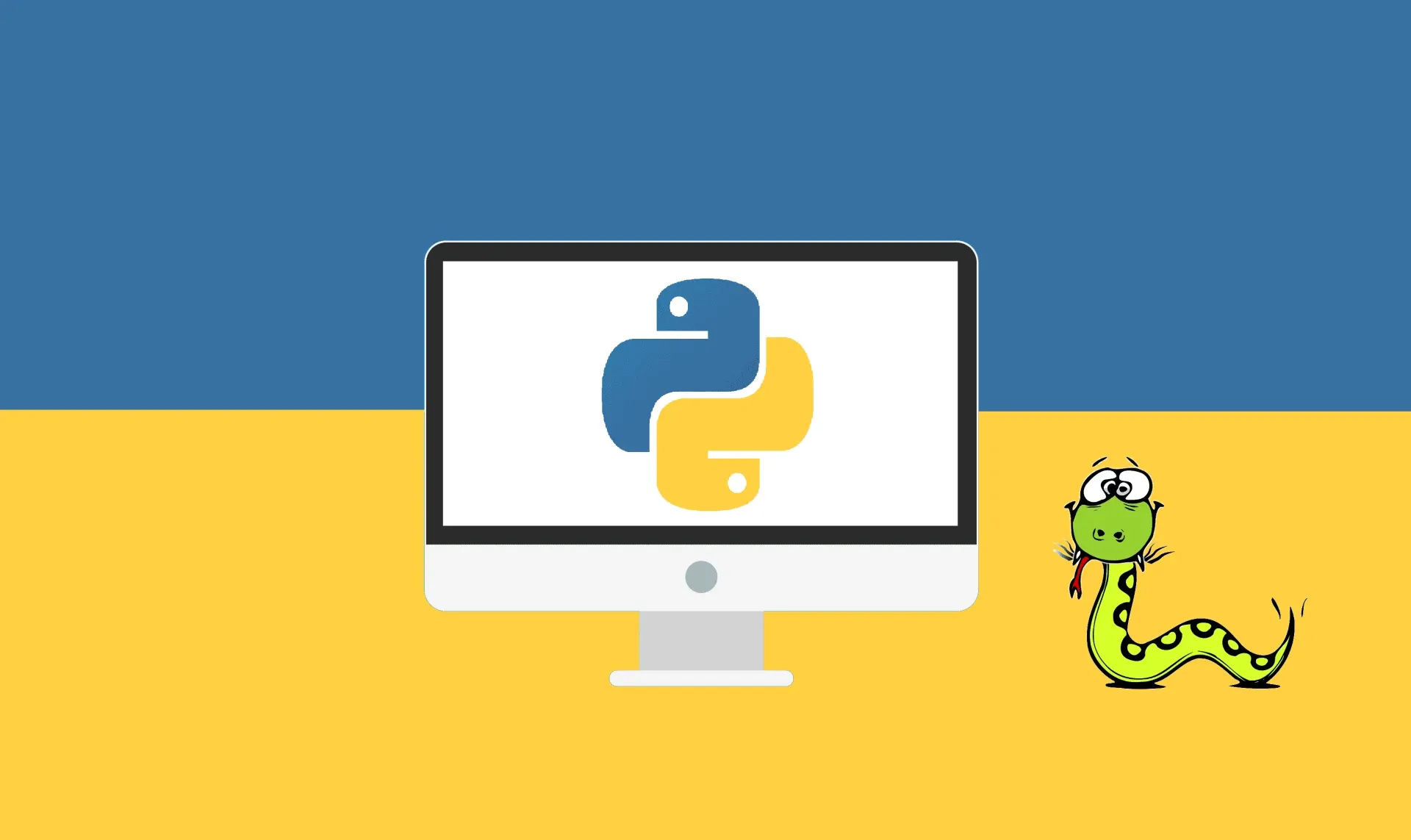This plan includes
- Limited free courses access
- Play & Pause Course Videos
- Video Recorded Lectures
- Learn on Mobile/PC/Tablet
- Quizzes and Real Projects
- Lifetime Course Certificate
- Email & Chat Support
What you'll learn?
- Python Numpy Library from Scratch
- Numpy Arrays - 1D, 2D, 3D, Zeros, Ones, Full Arrays etc
- Numpy Functions - Random, Linspace, Empty, Eye, Identity, Transpose, Diagonal Function etc
- Indexing in Numpy Arrays
Course Overview
Numpy means Numerical Python.
In this course, you will learn about the Numpy Library in Python Programming Language with real time coding exercises in Jupyter Notebook, in a very easy to understand language.
Numpy arrays allow us to perform faster mathematical operations, as compared to list or tuple.
Some Numpy Commands that we will use in this course.
1. Import numpy as np
2. 1-D Array - A = np.array( [1,2,3,4,5] )
# To create a One-dimensional array.
3. 2-D Array - A = np.array( [[1,2,3],[4,5,6]] )
# To create a Two-dimensional array.
4. 3-D Array - A = np.array( [[[1,2,3],[4,5,6],[7,8,9]]] )
# To create a Three-dimensional array.
5. Array From List - L = np.array( [1,2,3,4,5] )
# To create an array from list.
6. Array From Tuple - T = np.array( (11,22,33,44,55) )
# To create an array from tuple.
7. np.asarray( ) - To convert any datatype (list,tuple) into numpy array.
Ex : L_Array = np.asarray(list) ; T_Array = np.asarray(tuple)
8. Dynamic Array - A dynamic array is similar to an array, but with the difference that its size can be dynamically modified at runtime.
9. np.array( [1,2,3,4] , ndmin = 2 , dtype = complex )
# We can set the dimension and datatype of any array.
10. np.arange() - A = np.arange( 1,20,3 )
# To create sequences of numbers.
11. Reshape () - A = A.reshape ( 3,4 )
# To reshape an array.
12. Ndim - A.ndim
# To show the number of axis (dimensions/rank) of the array.
13. shape - A.shape
# Shape of the array i.e., matrix, rows, columns.
14. Size - A.size
# It shows the total no. of elements of the array.
15. dtype - A.dtype
# It shows the data type of elements of the array.
16. itemsize - A.itemsize
# It shows the size in bytes of each element of the array.
17. type() - type(A)
# It shows the type of the array.
18. .data - # It indicates the memory address of the first byte in the array.
19. strides - A.strides
# It is the no. of bytes that should be skipped in memory to go to the next element.
20. A = np.array( [[1,2,3], [4,5,6]] , dtype = float )
# Creating an array from lists with type float.
21. Arrays Operations - A = np.array([1,2,3,4]) , B = np.array([11,22,33,44])
A + B à [ 12 24 36 48 ] ;;
B – A à [ 10 20 30 40 ] ;;
A * B à [ 11 44 99 176 ] ;;
B / A à [ 11. 11. 11. 11. ] , OR ,
np.add(A,B) à [ 12 24 36 48 ] ;;
np.subtract(B,A) à [ 10 20 30 40 ] ;;
np.multiply(A,B) à [ 11 44 99 176 ] ;;
np.divide(B,A) à [ 11. 11. 11. 11. ]
22. Zeros Array - An array in which all values are 0
- ZA = np.zeros( (3,4) , dtype = int/float/str ) # Creating an array of all zeros values of given shape and type.
- We can define the shape and data-type of zeros array.
- We can create 1-D, 2-D, as well 3-D zeros array.
- The default data-type is float.
23. Ones Array - An array in which all values are 1
- A = np.ones( (4,3) , dtype = int/float/str ) # Creating an array of all ones values of given shape and type.
- We can define the shape and data-type of ones array.
- We can create 1-D, 2-D, as well 3-D ones array.
- The default data-type is float.
24. Full Value Array - An array in which all values are same (constant)
- A = np.full ( (3,4), 7 ) # Creating an array of 3x4 with one constant value (7) everywhere.
- We can define the shape, and pass the value to be filled in the 'Full Arrays'.
- We can create 1-D, 2-D, as well as 3-D Full Array, with integer, float or string values.
- The default data-type is Integer.
25. Random module - This module contains the functions which are used for generating random numbers.
A. Random Function - It returns random float number(s) between 0 and 1.
np.random.random((2,3)) # It creates a 2-D array of shape 2x3 with random values.
B. Randint Function
- It generates random integer number(s) between given range.
- By default, the range starts from 0.
- The numbers can repeat.
np.random.randint(5,20,4) # It create a 1-D array of given no. of integer values (4 here) between given input numbers 5 & 20. The values can repeat.
np.random.randint(5,20,(4,3)) # It creates a 2-D array of shape 4x3, between given input numbers 5 & 20. The values can repeat.
C. Rand Function - It returns random float number(s) between 0 and 1.
np.random.rand(10) # It creates an array of 10 random numbers between 0 and 1.
D. Randn Function - It returns random float numbers (positive and negative both) in the form of array.
np.random.randn(2,3,4) # It displays values (+/-) in the form of arrays.
E. Uniform Function
- It returns random float number(s) between the given range of values.
- The random numbers can't repeat.
- By default, the range starts from 0.
- If nothing is passed in (), it will return a float number between 0 and 1.
np.random.uniform(1,5,50) # It displays given no. of unique values between given input numbers. The values can’t repeat. The values are in float format.
F. Choice Function
- It returns random integer number(s) from the given sequence.
- The range starts from 0 by default.
- If only 1 element is passed, then it will return a number between 0 and that element.
- By default, replace = True , which means the numbers can repeat.
np.random.choice( [2,5,8,9,1,7] , size=16 , replace=True/False) # To create an array with 16 elements from the given list of numbers ; replace = True means elements can repeat
np.random.normal( loc=100, scale=5 , size=10 ) # It draws a random sample from normal distribution ;
loc – mean of distribution ; scale -std dev of distribution ; size – no. of elements.
26. Linspace Function - np.linspace() - It returns evenly(linearly) spaced values within a given interval.
np.linspace(start, stop , num=50, endpoint=True, retstep=True, dtype=None) ;
Ex – A = np.linspace(2, 20, num=15) ; B = np.linspace (1,100,12)
27. Flatten Array - A.flatten() # It is used to get a copy of array collapsed into 1-D.
28. Empty Function - np.empty() - # Empty Function is used to create an array of arbitrary values, of given shape and datatype, without initializing the entries.
A = np.empty( 4 ) ;;
B = np.empty( (5,3) , dtype=int ) ;;
C = np.empty( [2,5,3] , dtype=object )
Syntax : np.empty ( shape, dtype )
- Shape can given in list or tuple form
- The default datatype is float
29. We can define the data types of rows & columns
A = np.full( (2,3), 3, dtype = [ (‘x’,float) , (‘y’,int) ])
30. Eye Function – np.eye() - The Eye Function returns a 2-D array , with 1 on diagonal and 0 elsewhere.
Syntax : np.eye(shape, k, dtype)
- Here, if only No. of Rows is passed, then No. of Columns = No. of Rows
- K is Index of diagonal, by default, k=0 means Main diagonal ; when k=positive means Upper diagonal ; when k=negative means Lower diagonal
- The default datatype is float
31. Identity Array - np.identity() - It returns an identity array i.e., a square array with 1 on the main diagonal and all other elements are 0.
Syntax : np.identity(shape, dtype)
- It takes a single integer value only as shape.
- The No. of Rows and No. of Columns will be equal to the given integer value.
- The default datatype is float
32. Ones Like Array - It returns an array of Ones, with the same shape & type as of the given array.
Syntax : np.ones_like(array, dtype)
Ex : A = np.ones_like(B) - It will return an array A of Ones, of same shape & type as of the given already created array B.
33. Zeros Like Array - It returns an array of Zeros, with the same shape & type as of the given array.
Syntax : np.zeros_like(array, dtype)
Ex : P = np.zeros_like(Q) - It will return an array P of Zeros, of same shape & type as of the given already created array Q.
34. Full Like Array - It returns a full array of Constant element, with the same shape & type as of the given array.
Syntax : np.full_like(array, fill_value, dtype)
Ex : X = np.full_like(Y, 7) - It will return an array X filled with constant value 7, of same shape & type as of the given already created array Y.
35. Diagonal Function - It is used to extract the diagonal elements of an array, or , used to construct a new diagonal array.
Syntax : np.diag(a, k)
- If 'a' is a 2-D array, it extracts the diagonal elements.
- If 'a' is a 1-D array, it constructs a 2-D array with elements of 'a' on diagonal.
- By default, k is 0. Use k>0 for diagonals above the main diagonal. Use k<0 for diagonals below the main diagonal.
36. Transpose Function - It converts the Rows into Columns, and Columns into Rows.
Syntax : array.T , or , np.transpose(array)
37. copy() - A = a.copy() # It returns a copy of the array.
38. Operators - +, - , * , / -
A = np.array([1,2,3]) ;
B = A + 1 à B = [2,3,4] ;
C = A * 2 à C = [2,4,6]
39. Transpose - a.T
# Coverts the rows into columns and columns into rows.
40. Unary Operators - Those operators that require only one operand. Suppose ‘a’ is an array :
a.max() , a.max(axis=1), a.max(axis=0) , a.sum()
a.min() , a.min(axis=1) , a.min(axis=0) , np.sum(a, axis=1)
# These functions can be applied row-wise or column-wise by setting an axis parameter.
41. stack - c = np.stack( (a,b) )
# It creates a matrix using the arrays as rows.
42. column_stack - c = np.column_stack( (a,b) )
# It creates a matrix using the arrays as columns.
43. V-Stack and H-Stack - Vstack or Hstack is used to combine two or more arrays to form a new array.
43.A) vstack - c = np.vstack( (a,b) )
# It appends the data vertically. a and b are arrays.
43.B) hstack - c = np.hstack( (a,b) )
# It appends the data horizontally. a and b are arrays.
44. Array Indexing - Indexing is used to obtain particular element(s) or row(s) or column(s) from the numpy array(s).
Here, we pass the Index of the element to access it. The Index starts from 0, not from 1. It returns elements till "stop index - 1" index.
Indexing in 1-D Array : Format - array[start index : stop index]
Indexing in 2-D Array : Format - array[row_indexing, column_indexing]
Indexing in 3-D Array : Format - array[matrix_indexing, row_indexing, column_indexing]
Ex - a[1:2,1:2,1:2] # Since arrays may be multidimensional, we must specify a slice for each dimension of the array.
45. Mix-Integer Indexing - a[1,1:2,1:2]
# Mix integer indexing with Slice Indexing yields an array of lower rank. While, using only slices, it yields an array of same rank as the original array.
46. Integer Array Indexing - a[[0,1,2],[0,1,0]]
# It allows us to construct arbitrary (random choice) array using the data from another array.
47. Boolean Array Indexing - a[a>2]
# It is used to select the elements of an array that satisfy some condition.
48. .dot()
# It is used to compute inner product of the vectors, to multiply a vector by matrix, & to multiply matrixes.
49. np.any(x > 0.9)
# It checks if any value is greater than 0.9 in x. ( x = np.random.random(10))
50. np.all(x >= 0.9)
# It checks if all values are greater than or equal to 0.1 in x. ( x = np.random.random(10))
51. array_A[array_A == x] = y
# Replacing all x in the given array_A with y.
52. a[[2,4]] or a[(1,3),:]
# Getting the values from 2nd and 4th row of the matrix.
53. To get the results from the matrix : a.sum(), a.std(), a.var(), a.mean(), a.max(), a.min()
Pre-requisites
- Basic Python Programming knowlwdge, that you already have
Target Audience
- Data Science Beginner who are interested in Python
Curriculum 22 Lectures 02:28:33
Section 1 : Python - Numpy Library
- Lecture 2 :
- Numpy - Zeros Array
- Lecture 3 :
- Numpy - Ones Array
- Lecture 4 :
- Numpy - Full Array
- Lecture 5 :
- Numpy - Random Function Module
- Lecture 6 :
- Numpy - Linspace Function
- Lecture 7 :
- Numpy - Empty Array Function
- Lecture 8 :
- Numpy - Eye Array Function
- Lecture 9 :
- Numpy - Identity Array Function
- Lecture 10 :
- Numpy - Zeros Like, Ones Like, Full Like Array
- Lecture 11 :
- Numpy - Diagonal Array Function
- Lecture 12 :
- Numpy - Transpose Function
- Lecture 13 :
- Numpy - Unary Operators
- Lecture 14 :
- Numpy - Vstack Hstack
- Lecture 15 :
- Numpy - Array Indexing
- Lecture 16 :
- Numpy - Any & All Function
- Lecture 17 :
- 1-D, 2-D, 3-D Arrays
- Lecture 18 :
- Zeros Array
- Lecture 19 :
- Ones Array
- Lecture 20 :
- Full Array
- Lecture 21 :
- Random Function
- Lecture 22 :
- Linspace Function
Our learners work at
Frequently Asked Questions
How do i access the course after purchase?
It's simple. When you sign up, you'll immediately have unlimited viewing of thousands of expert courses, paths to guide your learning, tools to measure your skills and hands-on resources like exercise files. There’s no limit on what you can learn and you can cancel at any time.Are these video based online self-learning courses?
Yes. All of the courses comes with online video based lectures created by certified instructors. Instructors have crafted these courses with a blend of high quality interactive videos, lectures, quizzes & real world projects to give you an indepth knowledge about the topic.Can i play & pause the course as per my convenience?
Yes absolutely & thats one of the advantage of self-paced courses. You can anytime pause or resume the course & come back & forth from one lecture to another lecture, play the videos mulitple times & so on.How do i contact the instructor for any doubts or questions?
Most of these courses have general questions & answers already covered within the course lectures. However, if you need any further help from the instructor, you can use the inbuilt Chat with Instructor option to send a message to an instructor & they will reply you within 24 hours. You can ask as many questions as you want.Do i need a pc to access the course or can i do it on mobile & tablet as well?
Brilliant question? Isn't it? You can access the courses on any device like PC, Mobile, Tablet & even on a smart tv. For mobile & a tablet you can download the Learnfly android or an iOS app. If mobile app is not available in your country, you can access the course directly by visting our website, its fully mobile friendly.Do i get any certificate for the courses?
Yes. Once you complete any course on our platform along with provided assessments by the instructor, you will be eligble to get certificate of course completion.
For how long can i access my course on the platform?
You require an active subscription to access courses on our platform. If your subscription is active, you can access any course on our platform with no restrictions.Is there any free trial?
Currently, we do not offer any free trial.Can i cancel anytime?
Yes, you can cancel your subscription at any time. Your subscription will auto-renew until you cancel, but why would you want to?
Instructor

3236 Course Views
3 Courses



 Tech & IT
Tech & IT
 Business
Business
 Coding & Developer
Coding & Developer
 Finance & Accounting
Finance & Accounting
 Academics
Academics
 Office Applications
Office Applications
 Art & Design
Art & Design
 Marketing
Marketing
 Health & Wellness
Health & Wellness
 Sounds & Music
Sounds & Music
 Lifestyle
Lifestyle
 Photography
Photography






.jpg?crop=smart&width=600&height=400)











